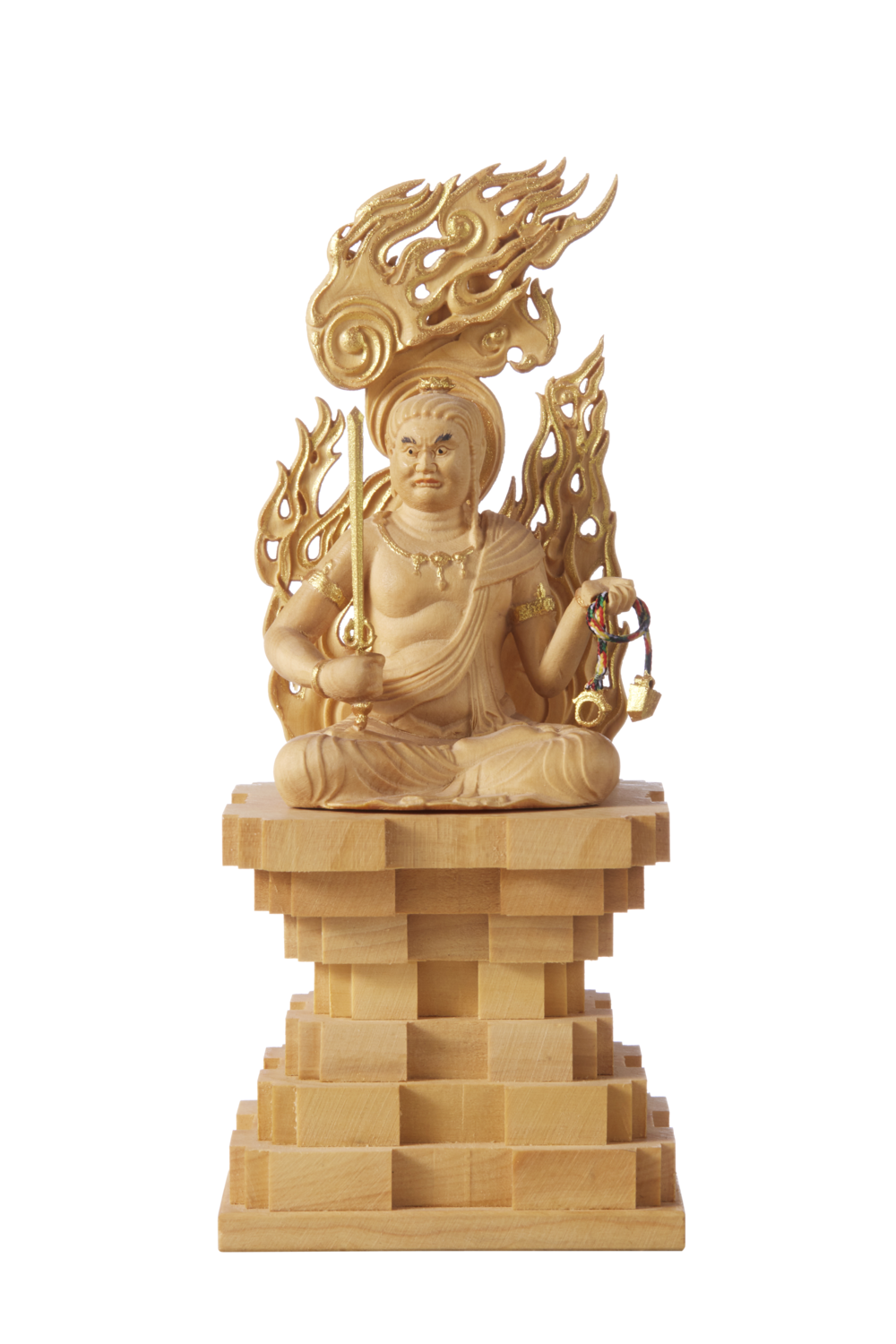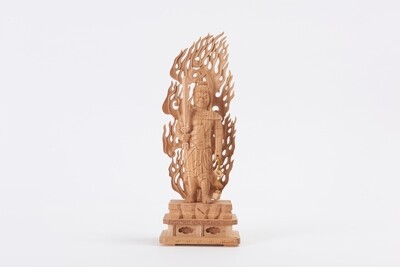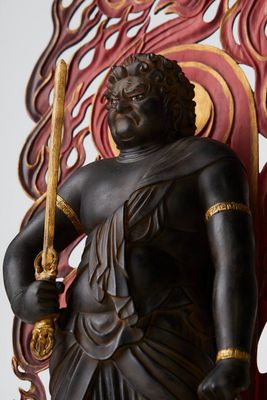Fudo Myoo (不動明王座像)
The standing Fudo Myō-ō represents the "world of the burning fire," which separates the human world and the Buddhist world, and looks out over the human world. In contrast, the sitting Fudo Myoo represents a steadfast and immovable figure. The angular material combined with the tightly compressed central seat symbolizes the rigidity and immovability of Fudo Myō-ō, and serves as a specific seat for the deity.
The Fudo Myoo seated statue is typically depicted in a seated posture. He usually holds a sword in his left hand and his right hand is raised with an open palm. This sword symbolizes the power to cut through evil and delusions, representing the wrath of Fudo Myoo. His dignity and strength are conveyed through this seated image.
The Fudo Myoo seated statue is adorned with vibrant colors. Five small Buddha heads are often depicted on his crown, each symbolizing one of the five elements. Elaborate decorations such as his crown and jewels are meticulously detailed, adding to the overall opulence of the statue.
The faith in Fudo Myoo is deeply rooted in esoteric Buddhism, and he is extensively described in esoteric Buddhist scriptures. The Fudo Myoo seated statue plays a crucial role in esoteric Buddhist practices and rituals, offering spiritual guidance and protection to believers.These statues are often dedicated in temples and shrines, where believers and visitors pay their respects and offer prayers. They are placed in specific locations within the temple grounds, serving as objects of worship for the faithful. Additionally, they are unveiled on specific dates and during ceremonies, further deepening the faith of the followers.Fudo Myoo is revered as a guide for believers in their pursuit of liberation from worldly desires and obstacles, as well as in seeking cosmic harmony. His fierce countenance symbolizes powerful protection against evil and adversity, providing a sense of security to believers.The Fudo Myoo seated statue is an integral part of Japan's rich Buddhist tradition and culture. It is highly respected by followers as a spiritual leader and guardian deity. His posture, colors, and decorations are significant elements in Japanese Buddhist art, serving as a visual means to convey Buddhist teachings and principles.- : H12.7×W5.6×D4.8 (cm), 95g
- Material: Tsuge (柘植)
- Made in China
- You can choose the option to consecrate this statue (give an eye-opening ceremony) before it is shipped from Japan. If you choose this option, we will bring the statue to a Japanese temple, and pay them the necessary fees so that your statue is properly consecrated. The temple will issue a certificate of proof with your name on it, which will also be shipped together with your statue
- Shipped globally from Japan by using DHL. DHL is the world-class shipping services provider who makes international delivery a fast, smooth, and hassle-free experience. Delivery time can be faster than when shopping at an e-commerce website in your country, and of course your package will be covered by insurance. You can check the shipping cost for your entire order before you make a purchase



